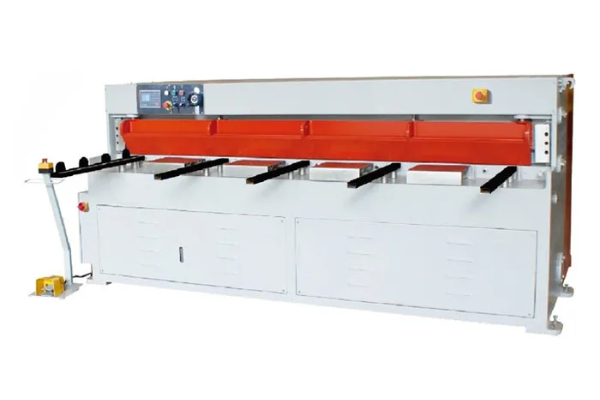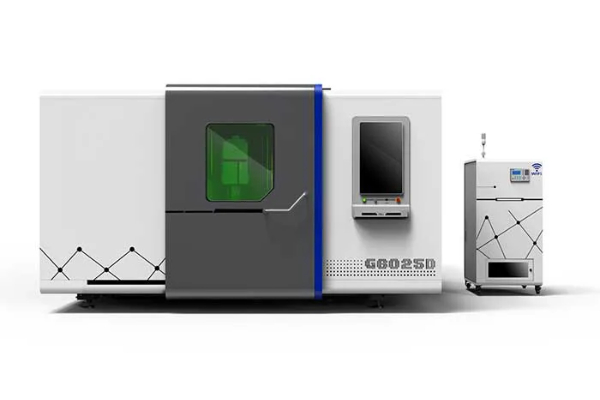
The Ultimate Guide to Sheet Metal Forming Machines
- By:Metmac
- 2024-09-02
- 161
The Ultimate Guide to Sheet Metal Forming Machines is an indispensable resource for anyone involved in the metal fabrication industry. This comprehensive guide covers all aspects of sheet metal forming, including machine types, materials, tooling, and processes. Whether you are a seasoned professional or just starting out, this guide will provide you with the knowledge and expertise you need to improve your sheet metal forming operations.
Machine Types
There are many different types of sheet metal forming machines available, each with its own unique capabilities. Some of the most common types of machines include:
– Press brakes: Press brakes are used to bend sheet metal into various shapes. They can be manually operated or CNC-controlled.
– Shears: Shears are used to cut sheet metal into desired shapes and sizes. They can be manually operated or CNC-controlled.
– Punch presses: Punch presses are used to punch holes in sheet metal. They can be manually operated or CNC-controlled.
– Roll formers: Roll formers are used to create continuous shapes in sheet metal. They can be used to produce a wide variety of shapes, such as channels, angles, and tubes.
– Laser cutters: Laser cutters use a laser beam to cut sheet metal into complex shapes. They are highly accurate and can produce intricate designs.
Materials
Sheet metal forming machines can be used to form a wide variety of materials, including:
– Steel: Steel is a strong and durable material that is commonly used in sheet metal forming.
– Aluminum: Aluminum is a lightweight and corrosion-resistant material that is often used in the aerospace and automotive industries.
– Stainless steel: Stainless steel is a corrosion-resistant material that is often used in food and beverage processing equipment.
– Copper: Copper is a ductile and corrosion-resistant material that is often used in electrical and plumbing applications.
– Titanium: Titanium is a strong and lightweight material that is often used in aerospace and medical applications.
Tooling
The type of tooling used in a sheet metal forming machine will depend on the material being formed and the desired shape. Some of the most common types of tooling include:
– Dies: Dies are used to create the desired shape in the sheet metal. They can be made from a variety of materials, such as steel, aluminum, and carbide.
– Punches: Punches are used to pierce holes in sheet metal. They can be made from a variety of materials, such as steel, aluminum, and carbide.
– Blades: Blades are used to cut sheet metal. They can be made from a variety of materials, such as steel, aluminum, and carbide.
Processes
Sheet metal forming machines can be used to perform a variety of processes, including:
– Bending: Bending is a process of shaping sheet metal by applying force to it.
– Cutting: Cutting is a process of separating sheet metal into two or more pieces.
– Punching: Punching is a process of creating holes in sheet metal.
– Roll forming: Roll forming is a process of creating continuous shapes in sheet metal.
– Laser cutting: Laser cutting is a process of using a laser beam to cut sheet metal.
-
Advanced Sheet Metal Rolling, Cutting, and Folding Machines for Efficient Fabrication
2025/10/22 -
High-Precision Sheet Metal Bending and Cutting Solutions for Modern Manufacturing
2025/10/22 -
High-Precision Solutions from Leading Sheet Metal Cutting Machine Manufacturers
2025/09/11 -
Reliable Sheet Metal Equipment for Sale to Support Precision Fabrication
2025/07/17
-
Advanced Sheet Metal Rolling, Laser Cutting, and Folding Machines for Precision Fabrication
2025/10/31 -
High-Performance Sheet Metal Bending and Cutting Machines for Modern Fabrication
2025/10/31 -
High-Quality Sheet Metal Equipment for Sale: Efficient Solutions for Modern Manufacturing
2025/10/31 -
High-Performance Sheet Metal Equipment for Sale: Forming and Shearing Solutions for Modern Fabrication
2025/10/22
-
A Guide to the Latest Innovations in Sheet Metal Folding Machines
2024/11/29 -
Key Features to Consider When Investing in a Sheet Metal Folding Machine
2024/11/28 -
Enhancing Precision with Advanced Sheet Metal Folding Machines
2024/11/27 -
How to Choose the Right Sheet Metal Folding Machine for Your Workshop
2024/11/26






